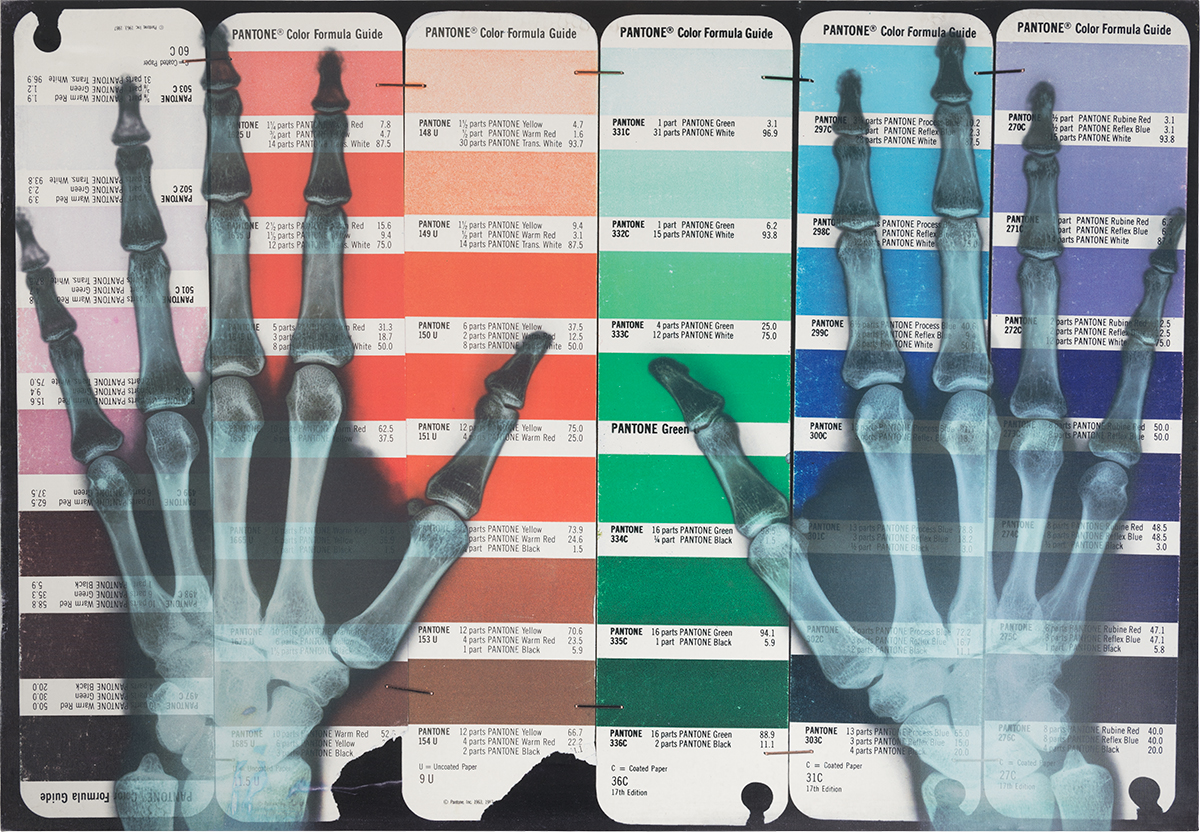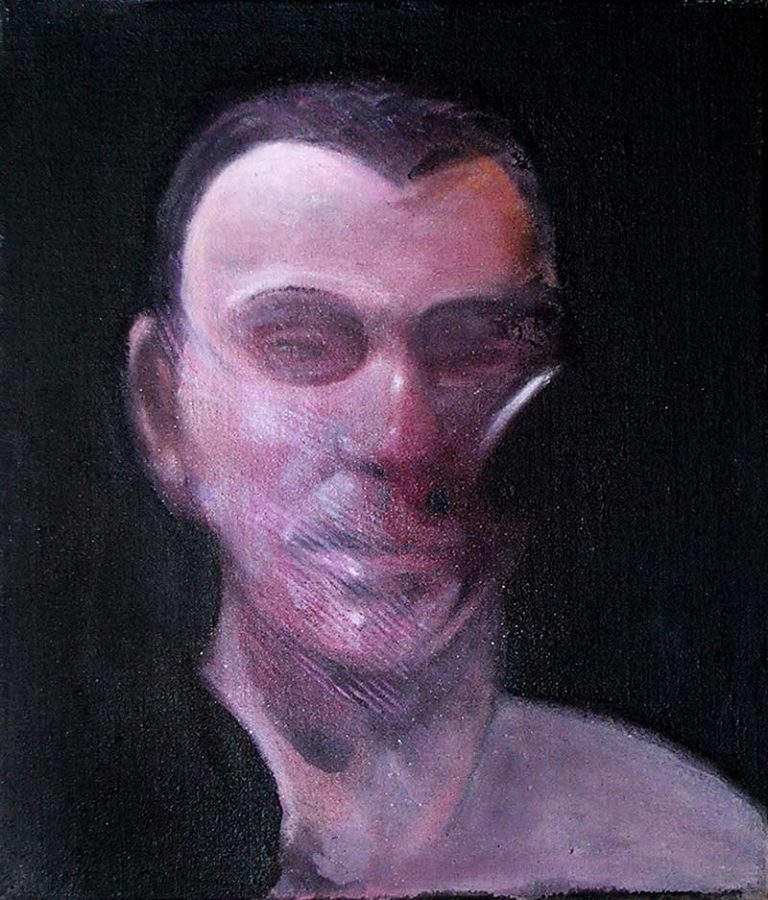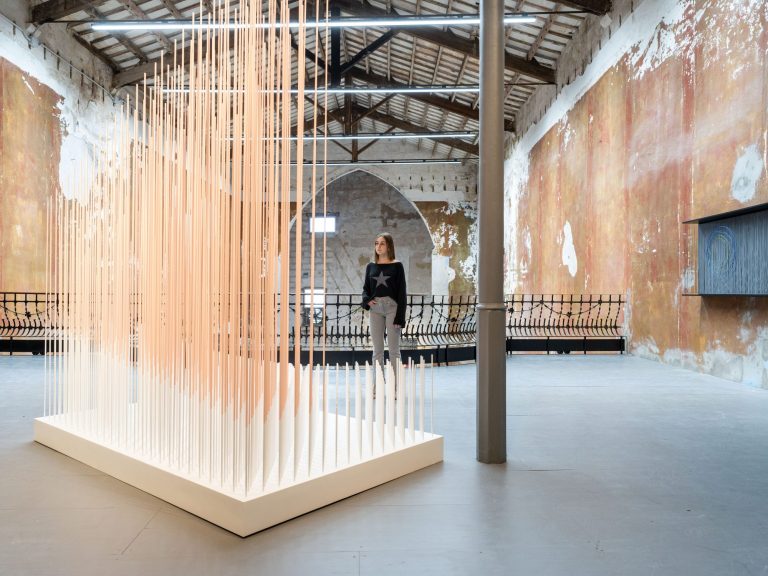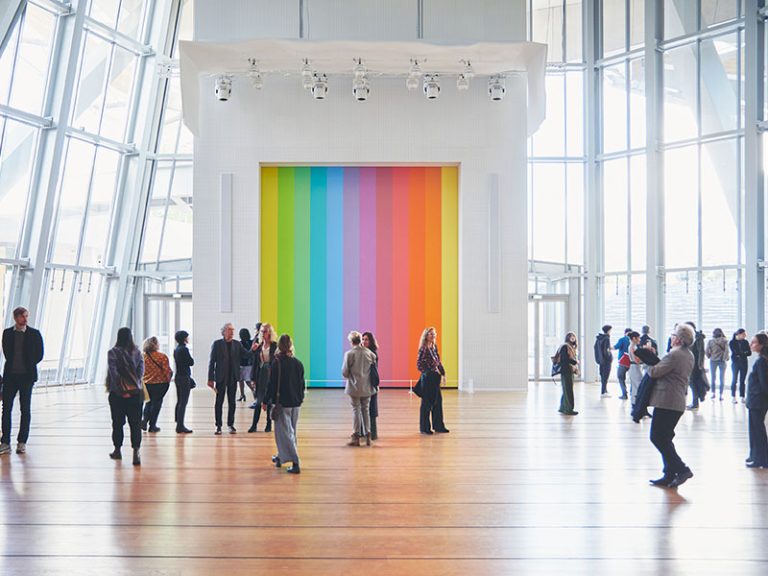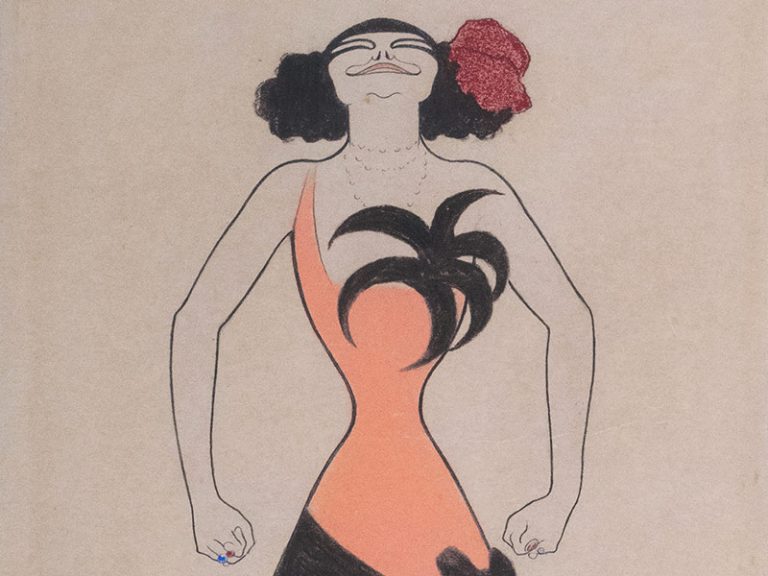Madrid,
He was an architect, plastic artist, writer, composer and performer, but above all a cultural agitator who played a very relevant role in the Madrid creative scene from the seventies until his death in 2008: Javier Utray, a unique character, contributed to laying the foundations of what we understand today as Spanish contemporary art and, far from specialization, he developed a production, as we said, multifaceted, but also related in its different genres, not articulated in watertight concepts.
He used to present himself as an architect, and that was his first creative foray, but his projects stand out more for their originality as such, as projects, than for the fruits of their materialization, given that he only worked on two commissions: in Benidorm and in La Manga del Mar Menor. A companion of generation and adventures, in the seventies and early eighties, of authors such as Carlos Alcolea, Carlos Franco, Santiago Serrano, Nacho Criado and Chema Cobo, he also felt a deep connection, as an artist and personally, with Marcel Duchamp: carried out his own interpretation of Rrose Sélavy and a Pentamarcelian pantheon (1977) which was censored at that time and which Utray himself wanted to destroy.
He also became involved in the editorial sphere (in the publications La Luna de Madrid, Sur Express, El Paseante or in the last era of The European) and his plastic production, linked to conceptual parameters, he complemented it with the writing of texts and essays on art and artists; also with the formulation of poems.
Three years after the Dos de Mayo Center in Móstoles recovered its figure, in an exhibition that reviewed all these aspects of its interests by Andrés Mengs and Mariano Navarro, the latter, Navarro, is now curated at the F2 Gallery in Madrid ” Clara – mind dying of art”, an exhibition dedicated to this creator that highlights his consideration of any banal and everyday routine or event as an act with artistic potential and his vision of the trivial as a space open to all possible meanings, without hierarchies. His own life could be interpreted as a kind of practical embodiment of that option of act in art in every little event; Navarro explained, coinciding with this exhibition, that meeting Utray was something of a transformative experience, as it implied changes in the way of interpreting the world.
The expression that gives the title to this proposal by F2 comes from his poem Mayeúticos undertakerswhich would accompany his first exhibition in the Moriarty room in 1990: he played in it with the names of those responsible for this space (Lola Moriarty and Clara Díaz-Aguado) to question the idea that it is possible to make art leaving a side the practices and knowledge treasured by those who preceded us.
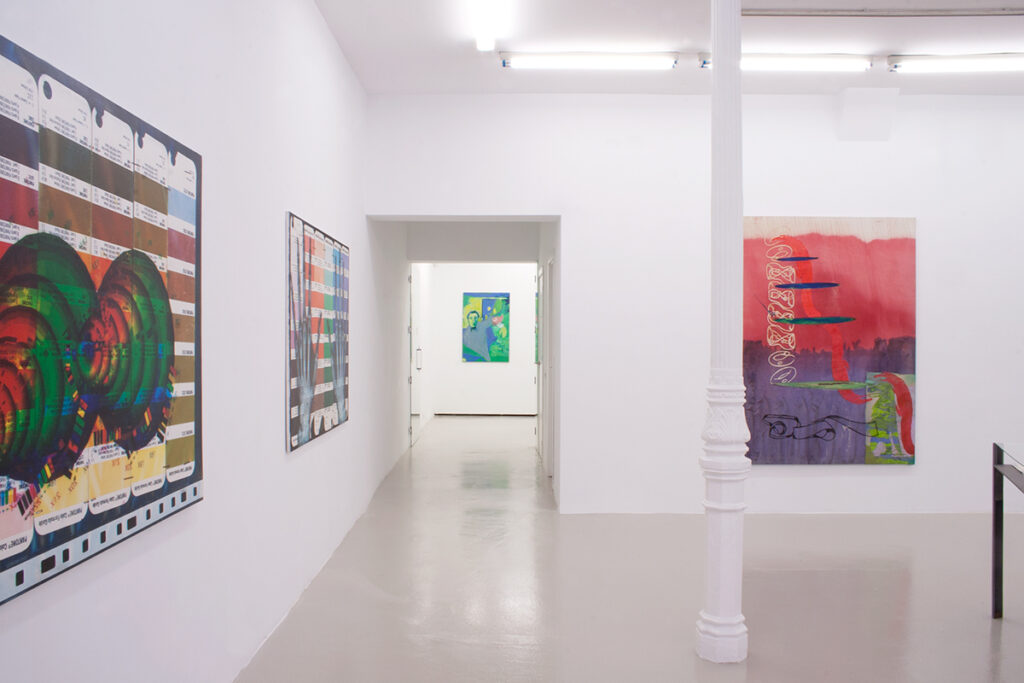
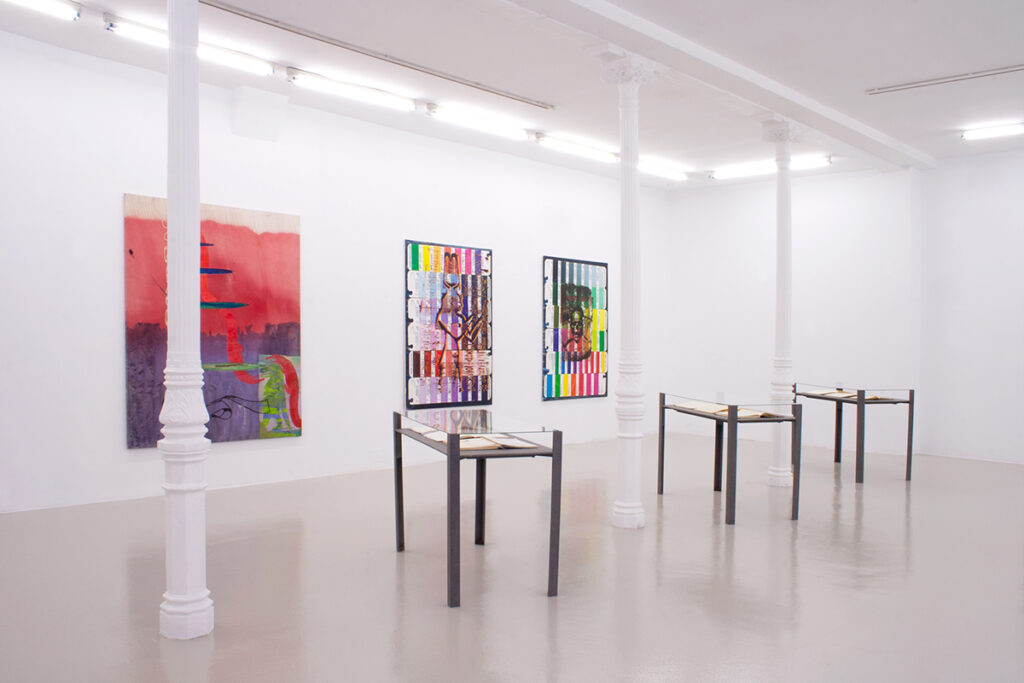
Unlike the CA2M tour in 2021, this exhibition focuses on his paintings and notebooks; Of the former we can contemplate works dated in various stages, leaving out, therefore, their architectural and musical creations, their objects and performances. Convinced that the concept – and not the technique, nor the aesthetic searches or mimesis – is the origin of that discipline, painting, he used to refer to it as pact with colorful dyed fabric and, as time progressed, he abandoned manual production in his processes.
The earliest work in F2 is a self-portrait dated around 1970 in which we can already find the features that determine the characteristics of Madrid figuration at this time: the preference for conceptual and narrative experimentation over representation per se, a palette very vivid chromatic, the cancellation of perspective and an accentuated humor that connected with contemporary philosophical currents. Two large spheres dominate this image (one closed and the other open, with two pupils) that speak of one of the recurring elements in that pictorial production of Utray, and also in the set of reflections on the history of art from an early period: the eye.
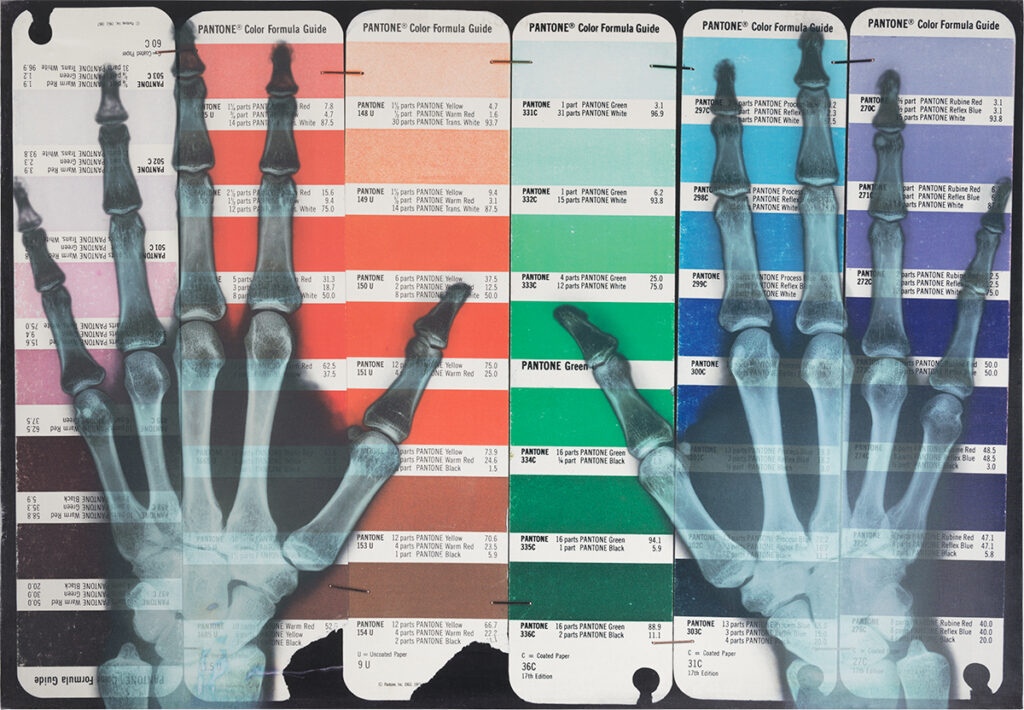
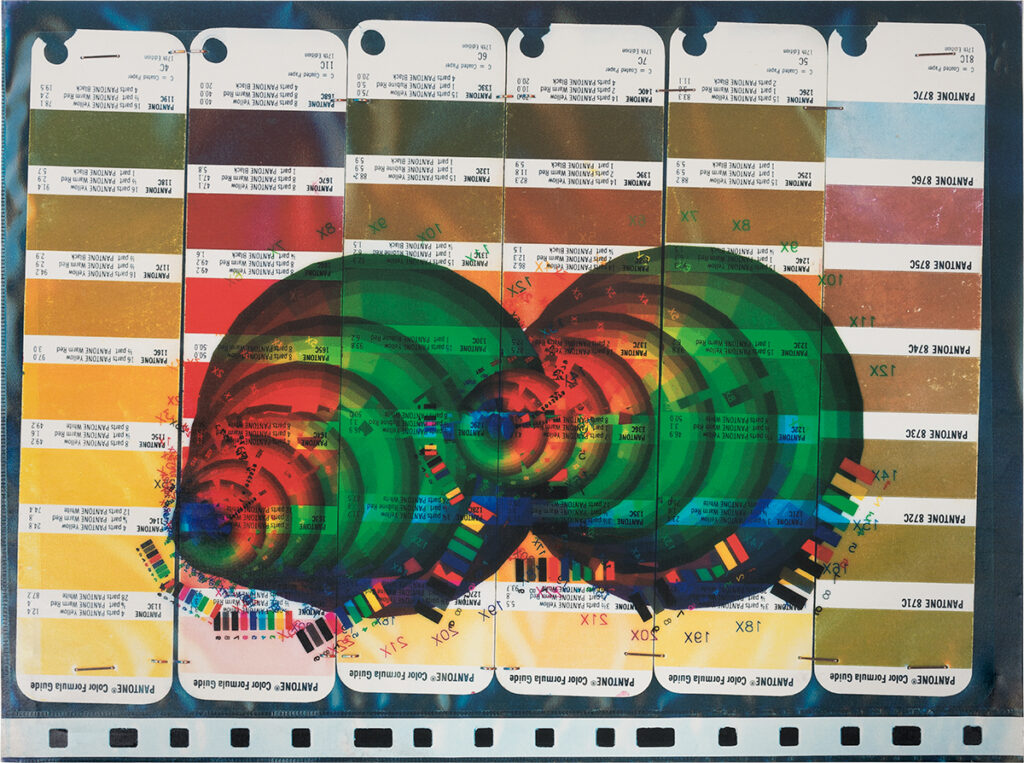
As for his notebooks, collected in display cases and dating from different periods of this author's career, they contain notes and notes that sometimes offer alternative perspectives to the paintings on display; In the case of the aforementioned portrait, he invites us to approach it from a triple approach: as optical gyroscope uncorking the eye in an anamorphosis, in reference to his beloved Duchamp; as a display of walk the eye over the painting; and how acupuncturist eye what with korean precisionprofiles sinusoid stigmatisms all over.
Given that, along with the eye, another issue very present in Utray's work is that of the awareness of death (premonitory or not, given the early nature of his death), this is also addressed in this exhibition. Appears in the series Egyptian Epiphanies, where he approaches practices linked to painting but from the absence of brush strokes, gestures and any manual elaboration – dictating priming instructions by telephone or through a manual -; also in chameleon eyes, in which we will find motifs such as Mexican skulls or Egyptian goddesses, along with x-rays of the painter's hands (absent here). These pieces stand out for their very vivid tones.
Along those lines, but again in his workbooks, he sketched the death mask of Roussel's mother, a skull in the hand of its owner or the dance of Holbein's skulls to the rhythm of the air that sprang from fans.
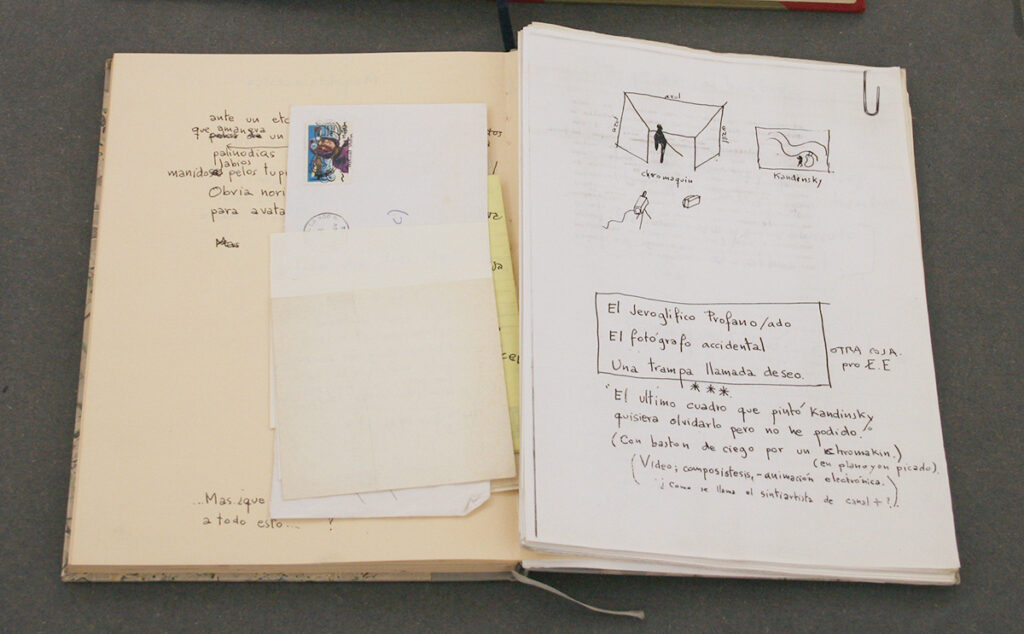
Javier Utray. “Clara – mind dying of art”
F2 GALLERY
Doctor Fourquet, 28
Madrid
From April 6 to May 25, 2024

